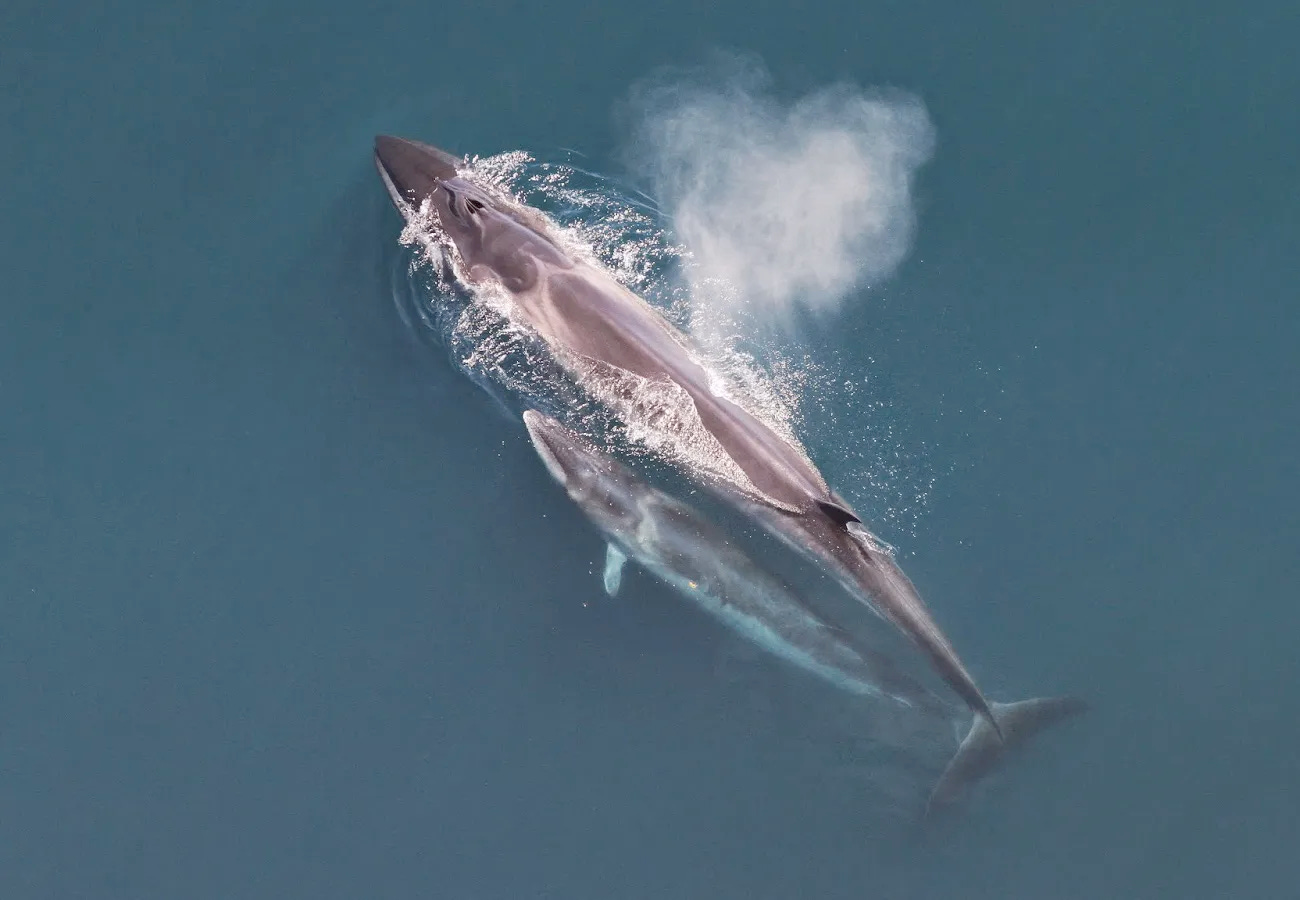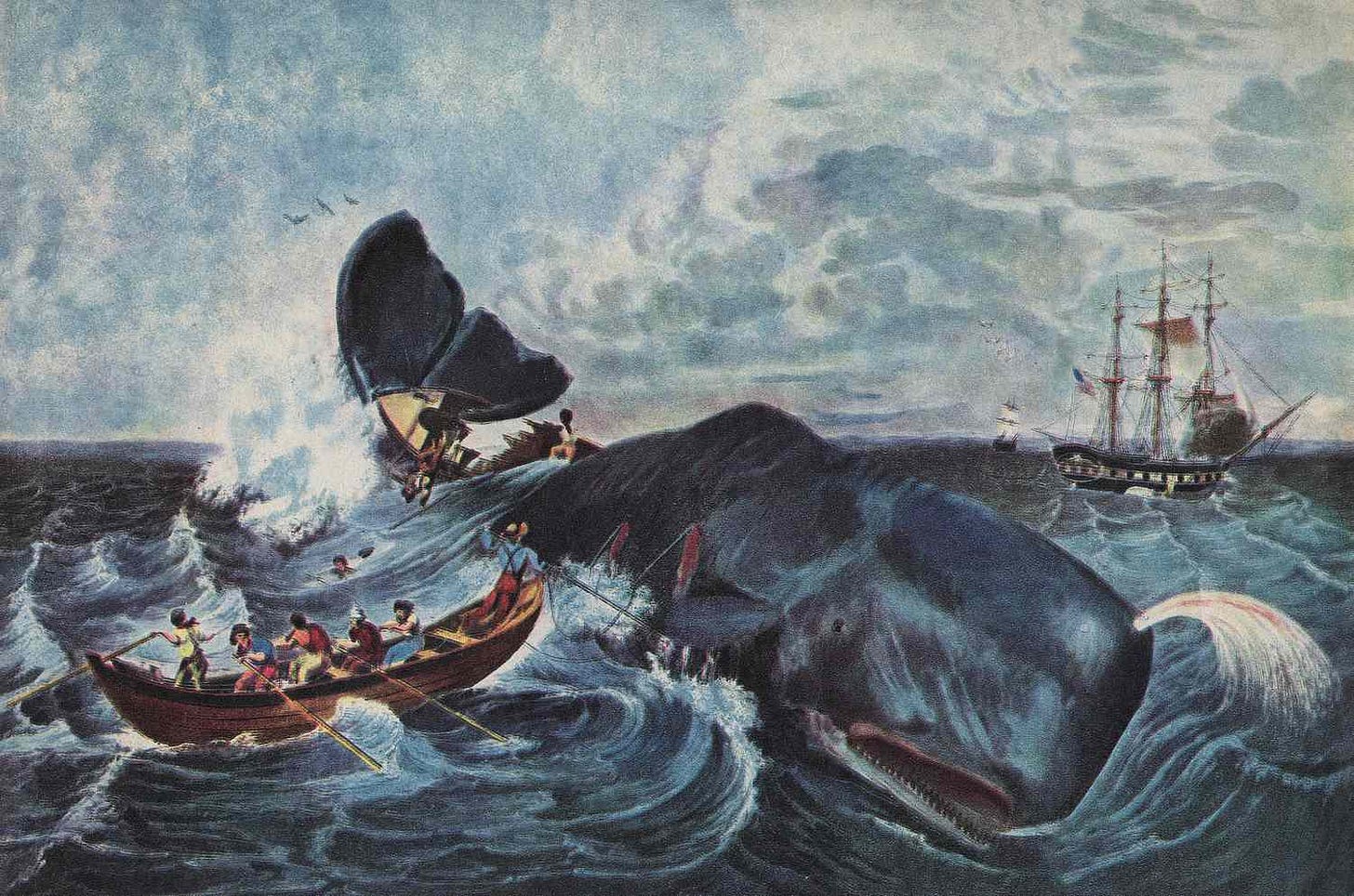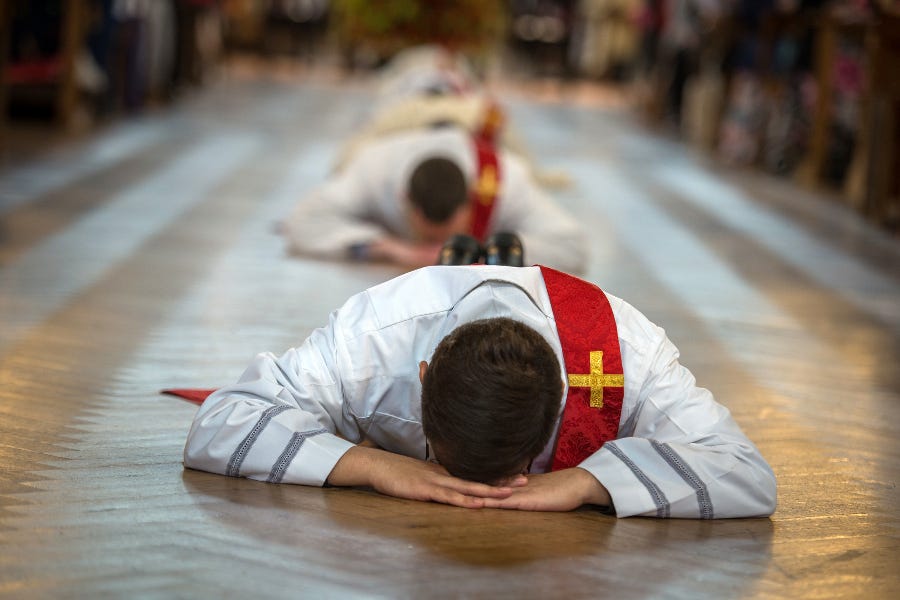Pillar subscribers can listen to this Pillar Post here: The Pillar TL;DR
Happy Friday friends,
Depending on where you are, or were yesterday, you’ve either celebrated the Feast of the Ascension of the Lord or will do so this Sunday.
There are three tiers of canon law at play here, and people often ask us what the deal is, what exactly their obligations are, and even how fast and loose you can play pilgrim across diocesan lines to celebrate it according to your day of preference.
The presumption of universal law is that the Feast of the Ascension is to be celebrated on its proper day, Thursday, the 40th day of Easter and 10 days before Pentecost, as a day of precept — a holy day of obligation.
But, the universal law also allows episcopal conferences to suppress or transfer the feast to the nearest Sunday. In 1998 the USCCB, with Roman approval, gave ecclesiastical provinces that option.
But not all of them took it up.
In 2024, the U.S. provinces observing the Ascension on Thursday, May 9 are Boston, Hartford, New York, Omaha, and Philadelphia. All other provinces observe the feast on Sunday.
So if you live in Maine, New Hampshire, Vermont, Massachusetts, Connecticut, New York, Nebraska, Pennsylvania, or Rhode Island, you likely needed to head to Mass on Thursday. If you live somewhere else in the U.S., you probably were not obliged.
Of course, there are always questions like “what if I’m traveling and the rules are different from my home diocese?” Well, it’s pretty easy, or complicated, depending on which canon lawyer you ask.
We had one such question come up in the Pillar offices yesterday, and JD and I managed to have a 15-minute argument about it before finally agreeing on an answer but for different reasons.
The best answer is you should read our explainer on the whole thing.
Now here’s the news.
The News
The Diocese of Knoxville, Tennessee has a new bishop, or rather is about to, which is good news for a diocese that has been in turmoil for years now.
Those who know him say that Bishop-elect Mark Beckman could prove to be a breath of fresh air. His friends call him an unassuming, kind, gentle pastor, with a gift for being present in his people’s lives.
Once he’s got his feet under the desk, Beckman has some hard decisions to make, and he’ll be doing so under considerable public scrutiny, thanks to everything that has come before.
—
The University of Notre Dame is launching a new center for the study of ethics, to be led by its outgoing president, Fr. John Jenkins, C.S.C.
The new center, which will be named after Fr. Jenkins, aims, according to himself, to be a hub of academic excellence and give the school “a distinctively Catholic voice on the great moral debates of the day.”
Joseph talked with Fr. Jenkins, as well as the outgoing and incoming directors of the de Nicola Center, and the conversation boils down to this: for many, the new Jenkins Center is pitching itself as a new home for “serious academic work and conversation” on and beyond the university, and not-so-subtly reframing the dCEC as a talking shop for Catholics about Catholic stuff.
Given that the work of the de Nicola Center has been considered one few bankable mainstays of Notre Dame’s Catholic identity, the growing impression is that Jenkins and his new pet project start from the premise that you can’t be serious about study and Catholicism at the same time, so you need to separate the two, or at least clearly favor one over the other.
So far, so very Land ‘o’ Lakes Statement. And to be clear: that’s a bad thing, if you’re asking me.
You can read the whole story here.
—
May is National Celiac Disease Awareness Month, if you were not already aware. Diagnoses of the disease, which comes with an acute intolerance to gluten, are on the rise.
Along with increased recognition of the disease, Catholic parishes are seeing an uptick in requests for and use of “gluten-free” hosts during the Mass.
But calling them “gluten free” is (one hopes) something of a misnomer, since the Church doesn’t consider an actually gluten-free host to be “bread,” properly speaking, and therefore it’s invalid material for the celebration of Mass.
So how low can you go with gluten, and why does it matter anyway? And while we’re on the subject, can you actually have “alcohol-free” wine for the chalice?
—
The beatification cause of a young Polish woman who worked as a flight attendant before serving as a lay missionary in Bolivia took a step forward today.
It’s a very modern process for a very modern (potential) saint.
While tribunal members have always examined the writings of candidates for evidence of their sanctity and devotion, and that their thought is compatible with the Church’s teaching, this is the first case I can think of where WhatsApp messages form a substantial part of the candidate’s “writings.”
—
The Archbishop of San Antonio, Texas, issued a lengthy and controversial social media thread this week about the war in Gaza.
The San Antonio archdiocese initially clarified to The Pillar that García-Siller’s account is personal, and his tweets do not, in any way, represent official communications from the archdiocese.
It’s the archbishop’s most recent foray into controversy on social media, but he has previous form on this issue.
And, as he has in the past, the archbishop has now deleted the comments and put out a lengthy clarification explaining that he did not mean to cause confusion or scandal.
You can read the initial story, and then what happened next, here and here.
Twitter bishops
I have never met Archbishop García-Siller, and it is perfectly possible he is a thoughtful, articulate, intelligent, prayerful man who reflects deeply before he speaks on sensitive issues and cares profoundly about avoiding confusion and scandal.
But, assuming he is, unfortunately that is not the impression he gives online when he decides to start tweeting about how “Jewish” people and “Israelites” need to stop “killing” people.
As someone who works in what my wife somewhat archly refers to as “media and communications,” I felt for the staff in his chancery, who must surely have wondered how they are supposed to explain their archbishop tweeting that “the Holocaust was already forgotten for Jews and everyone else,” the day after Yom HaShoah.
Of course, there’s nothing they can do except help him walk things back when necessary. It is, as they initially pointed out to us, his private account. And while they might counsel the archbishop to delete certain tweets, they have no power to censure him. At 67, the archbishop has at least another eight years in office, and one wonders how many more of these social media threads they have to look forward to.
Indeed, there’s no one who seems able to have a firm word in the archbishop’s ear about his social media habits — he is the metropolitan archbishop, so there is no local big brother to pull him aside.
I suppose the apostolic nuncio could give him a call, but my sense of Cardinal Pierre is that unless the bishop is tweeting about Pope Francis — as was, for example, Bishop Joseph Strickland — such things don’t rise to his attention.
Strickland and García-Siller might be outliers in their inflammatory twitter.com habits, and show a certain asymmetry when it comes to generating ecclesiastical pushback, but I think we’ve reached the point where we should be asking broader questions about bishops being on social media. Full stop.
Not all bishops, to be clear, are bad at it.
For example, Bishop Daniel Flores bucks the episcopal Texas trend by being a pretty savvy master of the medium. And while Cardinal Dolan’s daily video diaries sometimes make for cringy viewing, he’s sincere and folksy to a fault.
Winona-Rochester’s Bishop Robert Barron has a full-blown media operation which predates (and some critics claim overshadows) his episcopal ministry, but no one could accuse him of being anything less than a polished professional online — though I wonder if his “personal account” might not be run by staffers, at least some of the time.
And plenty of other bishops run quietly anodyne but perfectly harmless accounts offering daily scripture passages or links to homily videos.
But even for the most otherwise circumspect, the direct use of the medium comes with the risk of accidents — six years later, Cardinal Joseph Tobin still gets online barbs thrown at him for his mistaken tweeting of a good night message meant for his sister.
And I am personally aware of two serving U.S. bishops who have had to be privately warned that they had (presumably accidentally) “liked” inappropriate pictures and videos on their personal feeds — mercifully “unliking” them before they could be widely noticed.
It’s understandable that, in an age where public figures, celebrities, and politicians are expected to have twitter.com handles and Instagram feeds, bishops would assume the same expectation for themselves. But is it really necessary?
Do bishops really need personal, unfiltered, spontaneous outlets to communicate with an anonymous and theoretically limitless crowd? I’m unconvinced they do.
For a start, it seems to me that the entire idea of a “personal” episcopal account is something of a contradiction in terms. If your handle is some version of “@BishopSoandso” or “@CardinalThisguy,” people aren’t likely to be following your account for niche Minecraft chat or exaggerated fishing stories.
Everything you say, as Archbishop García-Siller has proven more than once, is going to be received as coming not from a “private individual” but from a successor to the Apostles and judged by that standard.
That being the case, why would a bishop want a communications platform outside the reach of his comms staff’s ability to help manage — even if just to check your grammar and spelling — isn’t that why we have chancery communications departments?
Sure, there’s a lot of fast-moving debate on live issues that happens online. But they famously generate more heat than light — I do “media and communications” for a living and I avoid “live” debate online for exactly that reason, so I’m not sure they demand spontaneous episcopal intervention.
To be clear, I am not saying bishops can’t be trusted with twitter.com any less than the rest of us, or that they are as a class of person less able to master its basic functionality than the rest of their generational peers.
I am not denying that a “digital space” exists and needs authentic Christian voices.
And I am not saying bishops should all get off twitter.com, or Instagram, or whatever other app they might use in service of the kingdom — except for Tik Tok, no one should be on Tik Tok, that’s basically aiding a hostile foreign power, of both the U.S. and the Church.
I’m just saying I’m at a loss to identify any real need for bishops to write their own tweets in real time. And absent that, the risks seem to outweigh the potential rewards here.
Thinning the herd
JD forwarded me an interesting news item yesterday, which I recommend to your attention.
It seems that a cruise ship pulled into New York harbor last weekend with a 44-foot-long whale speared onto its prow.
My sense of the piece is that the 55,000 lbs semi-decomposed sei whale came as something of a surprise to all concerned — both the folks at Brooklyn Cruise Terminal and the ship’s crew. Though how you miss that hanging off the front like a hood ornament I’ll never know.
According to a preliminary examination of the whale, it seems that it was pretty definitely killed by the ship, and wasn’t otherwise ill or injured. On the contrary, it seems the whale was working off a full stomach and a full layer of blubber when it got hit.
At any rate, the ship’s owners have issued a flurry of statements making it clear they don’t know how this could have happened because they take this sort of thing very seriously and are at pains to avoid whale-spearing and similar incidents and they have all sorts of procedures and practices in place to guard against it.
My immediate takeaway was twofold: first, that the lady doth protest a little too much.
It seems like they are doing a lot to preempt criticism for what, on the face of it, could surely only have been a freak accident. But maybe there’s something more to it.
Maybe unbeknownst to the rest of us, cruise captains actually see whales in their shipping lanes the way truckers look at armadillos on a Texas highway, and they are terrified of being accused of eco-crimes — sei whales are endangered, you see.
My second takeaway was, and I accept this might be controversial, if these events are actually a real risk that needs constant mitigation, maybe there are just too many damn whales out there?
I know, I know, you’re not supposed to say these things, but I am just trying to think this through.
Sei whales, which can grow to be about 70 feet long and weigh in at a whisper under 30 tonnes, are supposedly endangered.
I say “supposedly” not because I am some callous monster who hates the natural world — I’m not. I believe we have a serious moral obligation to be stewards of the Earth and all the creatures thereon (except for pandas, we’ve tried everything with those bastards and they simply will not meet us halfway).
But how endangered these sei whales actually are is hard to suss out.
According to marinebio.org, there are “only 57,000 to 65,000” of them in the world, estimated to be about a third of their pre-whaling population, though it’s not clear to me how we get that number apart from calculating how many were known to have been successfully hunted.
The World Wildlife Fund and the International Whaling Commission don’t seem to have an estimate for the global sei whale population, and the National Oceanic and Atmospheric Administration appears to take infrequent surveys of stocks in different regions but doesn’t offer a total number.
But according to the chief scientist of the Atlantic Marine Conservation Society, which is leading the inquest into the NY cruise ship affair, that group has dealt with “more than 100” such whale incidents over the past few years.
That seems like a remarkably high figure for an apparently scarce species spread across the vastness of the world’s oceans.
“O God, thy sea is so great and my boat is so small,” goes the fisherman’s prayer. What, then, are the chances that these things are being randomly bulldozed by the dozen every year if there are hardly any of them left?
I suppose it could be just really, really bad luck, though I am not sure how far our obligations go to a species that is that misfortunate.
I take luck seriously as a survival factor.
When I ran the office of a Member of Parliament, we’d often receive hundreds of applications for jobs or internships, all of which I would have to wade through, rank, and sort, before choosing potential interviewees.
I simply didn’t have the time to read them all, but I would immediately thin the herd by throwing the top half of the resumé pile in the bin. Bad luck for them, you might think, and it was. But I didn’t want any unlucky people working in the office. My boss had an absolute conniption when he realized this was a standard part of my vetting process, but he couldn’t mount a convincing argument against the logic of it.
Back to the whales, it seems to me that calling them “endangered” when there are tens of thousands of them is a bit of a liberty with the language. I can accept that “a third of the pre-human interference population” is a significant decrease, but I am not sure that leads to the conclusion that we have dangerously few of them.
Near where I live, I am sure the local deer population was tens, if not hundreds, of times its current number before people turned up. But I’m sorry, if there are so many that they can’t keep off the B-W Parkway and out of the way, nature’s going to do its thing to keep the numbers down. It’s called living in harmony with your environment.
We’d all love to have more bison in North America, but I’d imagine even the most irrational animal rights advocate could see that the traffic in downtown Des Moines simply won’t bear pre-19th century herds sweeping through the city.
The truth is, man is a seafaring creature. More than 90% of global trade is carried by ship, and our global economy isn’t reverting back to the pre-industrial maritime traffic patterns anytime short of a cataclysm.
The cold reality is either the whales need to learn to avoid the ships (which frankly shouldn’t be that hard, given the size of the open ocean) or we need to accept that maybe the maximum sustainable population isn’t what it used to be.
In which case, I think we should reconsider controlled whaling to manage the population.
Oh for heaven’s sake, I said “controlled.” Just take a breath and hear me out.
If whales are plentiful enough that they end up casually spattered across the prows of cruise ships like bugs on a windscreen, it seems to me we should be a little more intentional about controlling their numbers, just as a matter of responsible ecological husbandry.
The Japanese currently harvest some 25 sei whales a year, to much international opprobrium, but this might not be enough. They used to take around 130 a year until quite recently.
I’ve never eaten a sei whale, but I’d give it a go, in the spirit of Laudato si’ and all that. If you think that makes me a monster, I’d ask you to consider which is less wasteful — hunting a stag and eating it, or hosing one off the front of a Greyhound bus at an interstate service station?
I’m not saying this is a perfect argument here, or that I am in full command of the facts. But JD sent me this article and I am just trying to think it through.
See you next week,
Ed. Condon
Editor
The Pillar








